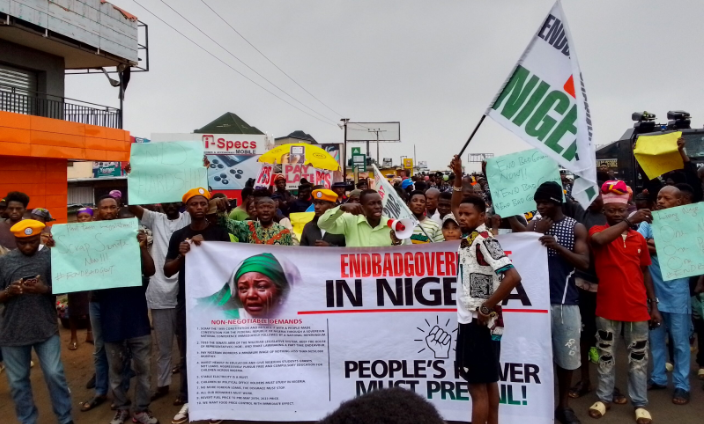Protests across Nigeria on Independence Day marked a significant decline in participation, with the #FearlessInOctober demonstrations drawing record low numbers in both the Federal Capital Territory (FCT) and various states.
This reduced turnout occurred in the wake of heavy security measures deployed by law enforcement agencies, which were visibly present to deter potential unrest.
The protests, organized by the Take It Back Movement, were in direct response to President Bola Tinubu’s announcement earlier that week regarding a planned 30-day National Youth Conference. The movement’s leaders rejected the initiative, labeling it a “jamboree” intended to reward the President’s supporters and distract from pressing governance issues affecting the youth.
In his Independence Day address, President Tinubu emphasized the importance of youth in Nigeria, stating that they constitute over 60% of the population. He described the upcoming conference as a platform for addressing diverse challenges, such as education, employment, and social justice.
“This confab will unite young people nationwide to collaboratively develop solutions to the issues confronting them,” he stated.
However, the National Coordinator of the Take It Back Movement, Juwon Sanyaolu, criticized the President’s plans. He argued that the administration has previously implemented significant policies without consulting the youth or holding similar conferences. “What confab did he organize before awarding himself a private jet costing billions? Nigerians don’t need a confab; we need good governance,” Sanyaolu asserted. He emphasized that the movement would continue to protest but would announce new dates for future actions.
Despite calls for action, the protests experienced a markedly lower turnout compared to previous rallies. In the FCT, participants gathered at the Utako market area but were quickly dispersed by police using tear gas. The FCT police spokesperson, Josephine Adeh, denied reports of a police attack on protesters, insisting that officers were acting to prevent miscreants from looting.
In Lagos, demonstrators at the Ikeja Underbridge were closely monitored by security forces, including police and members of the Lagos Neighbourhood Safety Corps. Protesters voiced their demands for policy changes, holding placards that called for a reversal of recent electricity tariff increases and reductions in fuel prices.
In states like Ogun and Rivers, planned protests faced obstacles due to heavy security presence and counter-protests organized by those aligned with the government. Reports indicated that some protesters in Port Harcourt were allegedly attacked by thugs who were reportedly supported by security personnel.
Reactions to Tinubu’s proposed youth conference varied widely. The Minister of State for Youth Development, Ayodele Olawande, indicated that the government would form a task force to ensure effective implementation of the conference’s recommendations. He expressed confidence that the President’s willingness to listen to youth voices marked a positive step forward.
In contrast, opposition parties, including the Peoples Democratic Party (PDP) and the Coalition for United Political Parties (CUPP), criticized the initiative. PDP Deputy National Youth Leader Timothy Osadolor claimed that the President’s approach signaled a lack of concrete governance ideas, while CUPP spokesperson Mark Adebayo described the conference as insincere, suggesting it could serve as a distraction for the administration’s shortcomings.
Supporters of the President, including the All Progressives Congress (APC) and various youth groups, praised the initiative as a meaningful attempt to engage with young Nigerians. APC Director of Publicity Bala Ibrahim urged young people to reconsider their opposition, framing the conference as a genuine effort to prepare them for future leadership roles.
The protests highlighted widespread discontent among Nigerian citizens regarding economic hardships and governance issues. While some states experienced vibrant demonstrations, others saw minimal or no participation, indicating a cautious atmosphere influenced by security concerns.
In states like Kaduna and Osun, local activists noted the ongoing economic struggles but approached their protests with a sense of strategic caution. Leaders emphasized the need for sustained activism but acknowledged the changing dynamics and security landscape.
As the protests unfolded, calls for the government to address pressing issues—such as fuel prices, security, and the cost of living—remained at the forefront of public discourse. The Take It Back Movement and other civil society organizations vowed to continue their advocacy for good governance and accountability in Nigeria.
The October 1 protests, while low in turnout, underscored a critical juncture in Nigeria’s political landscape. The mixed reactions to Tinubu’s proposed youth conference reflect deeper issues regarding governance and the role of youth in shaping the future of the nation. As calls for change continue, the tension between citizen activism and governmental response is likely to define the months ahead.

